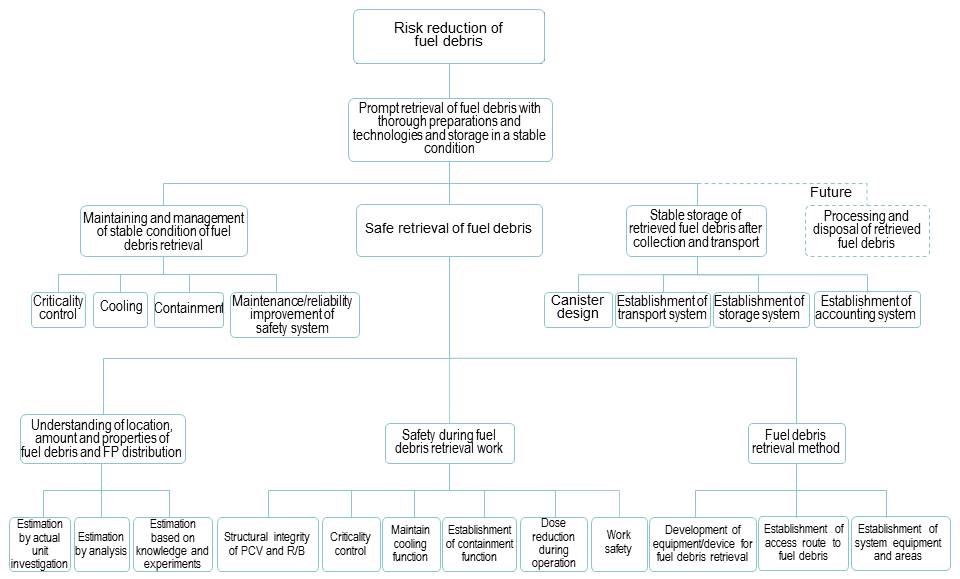The whole picture of decommissioning strategies and issues -Fuel debris retrieval-
Organization of technical strategic plans and issues
A diagram of organized strategies for reducing the risk of Fukushima Daiichi NPS is illustrated in the logic tree below.

1.Waste adsorption column and waste
sludge from water treatment system
<Reference: Technical Strategic Plan 2015 (NDF)>
In this, thorough preparations are necessary for safe and sure fuel debris retrieval, and we face the challenges of many difficult problems. Currently, the fuel debris is fixed in a stable condition, but in order to further reduce risk we must retrieve it after thorough preparation and technology, and put it into stable storage.

<Reference: Technical Strategic Plan 2015 (NDF)>
Fuel debris retrieval must be approached in 3 steps, (1) maintain and manage the fuel debris in a stable condition up until retrieval, (2) safely retrieve the fuel debris, and (3) after containing and transportation of retrieved fuel debris, put it into stable storage.
”Understanding fuel debris amount, location, characteristics, and FP distribution” is important input information to study the fuel debris retrieval method, and we make a comprehensive estimation based on all the information we can gather, including investigation of the actual equipment, analysis, past knowledge and experiments.
From the logic tree described above, we have established the following 9 items as being necessary for the study of “ensuring safety during fuel debris retrieval operations”, and “fuel debris retrieval method”, and are performing R&D in those areas.
- Ensuring the structural integrity of PCV and buildings
- Criticality control
- Maintenance of the cooling function
- Construction of the containment function
- Reducing exposure of workers
- Development of fuel debris retrieval machinery and equipment
- Construction of access routes to fuel debris
- System equipment, area construction
- Ensuring labor safety